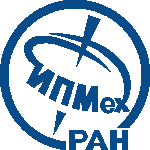
|
ИСТИНА |
Войти в систему Регистрация |
ИПМех РАН |
||
Distribution of artificial radioisotopes in granulometric and organic fractions of alluvial soils downstream from the Krasnoyarsk Mining and Chemical Combine (KMCC), Russiaстатья
Статья опубликована в журнале из списка Web of Science и/или Scopus
Дата последнего поиска статьи во внешних источниках: 30 сентября 2016 г.
- Авторы: Korobova E.M., Linnik V.G., Brown J.
- Журнал: Journal of Soils and Sediments
- Год издания: 2015
- Издательство: Ecomed Verlagsgesellschaft AG & Co.
- Местоположение издательства: Germany
- Первая страница: 1
- Последняя страница: 9
- DOI: 10.1007/s11368-015-1268-2
- Аннотация: Abstract Purpose: The purpose of this study was to compare the distribution of the most significant medium and long-lived radioisotopes, i.e., 60Co, 137Cs, and 152Eu, in granulometric and organic fractions of alluvial soils downstream from the Krasnoyarsk Mining and Chemical Combine (KMCC), Russia, to reveal natural patterns of their behavior and accumulation. Materials and methods: Soil samples collected at different elevations and depths in a floodplain of the Yenisey River downstream from the KMCC (20–250 km) were subjected to granulometric analysis by dry screening and a modified Petelin method. Fractions <0.05 mm were collected by a pipette method. Radionuclide activity in the different soil layers and in their fractions was determined using a spectrometer equipped with an HPGe detector. Concentration of total C (Ctot) and C of carbonates (Ccarb) was determined using a CHN analyzer before and after elimination of carbonates, organic C (Corg) being calculated as the difference between the obtained values. Organic fractions were separated by saturation of the air-dry sample with 0.1 M NaOH and further precipitation of humic acid from filtrate by 1 M HCl at pH 1. The separation resulted in three fractions of the fulvic acids, humic acids, and the residue containing the denuded mineral phase and the refractory organic residue. The selected bulk samples and fractions were analyzed for radionuclide activity. Results and discussion: Based on earlier results, the distribution of the pelite (<0.01 mm) and aleurite (0.01–0.1 mm) fractions in alluvium and soil samples have been analyzed to evaluate the grain-size contribution to radionuclide fixation. A positive correlation between radionuclide activity and the portion of pelite fraction was established for 60Co and 152Eu, while 137Cs accumulation was not related with this fraction. In organic matter (OM) extracts, more than 90 % of 137Cs, at proportions similar to those attributable to 238Th and 40K, were associated with the residue fraction, while 72 % of 152Eu and 46 % of 60Co were found in the mobile fraction of the low molecular fulvic acids. In successive layers of the soil vertical profile, approximately 94 % of the 152Eu variation may be explained by a linear model with Corg and Ccarb values as independent variables. Conclusions: Different associations of 137Cs, 60Co, and 152 Eu with particulate and organic fractions in river sediments and floodplain soils could be explained by the dominating discharge form (water soluble or particulate), affinity to organic substances of different mobility, sorption by minerals and their aggregates, and chemisorption. © 2015 Springer-Verlag Berlin Heidelberg
- Добавил в систему: Линник Виталий Григорьевич